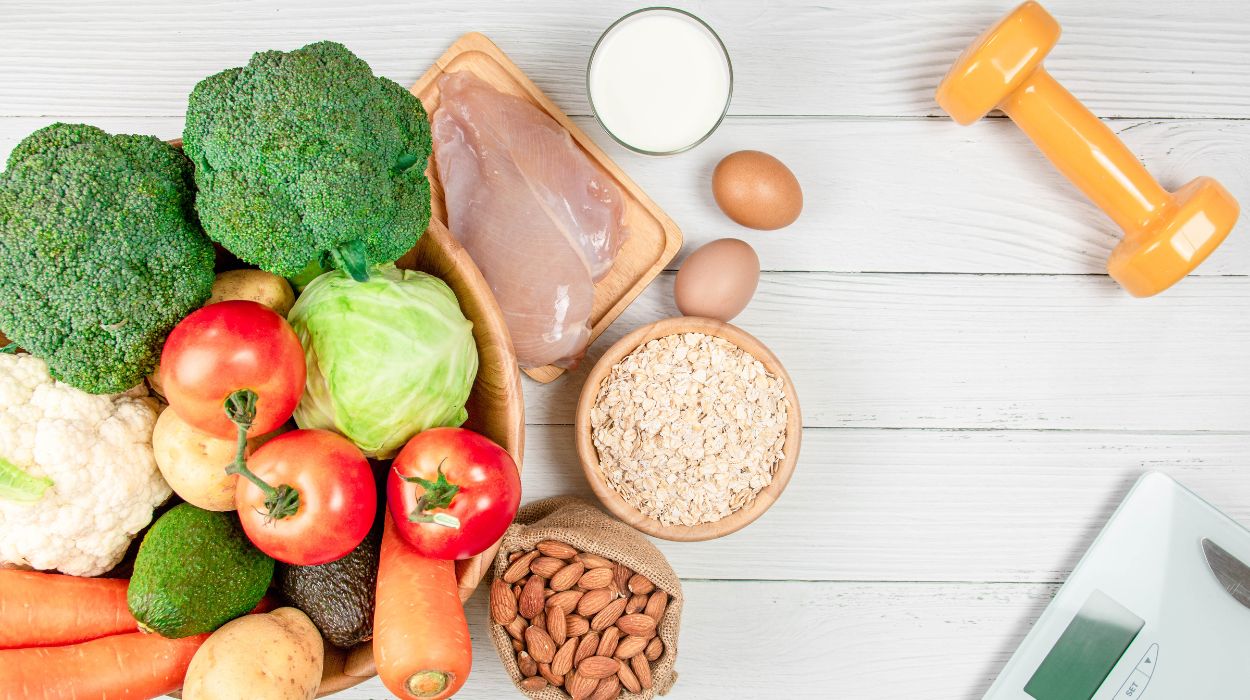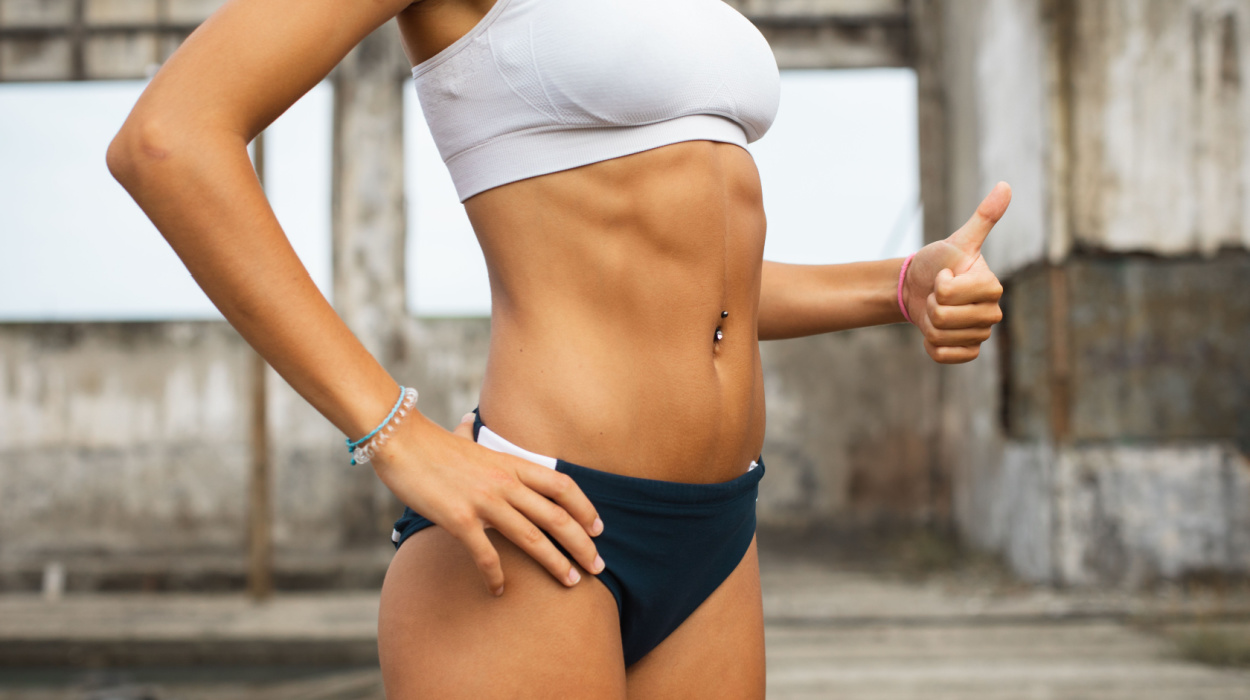If you’re interested in losing weight and toning up, you might be looking for tips on how to get shredded. After all, if you’re putting in the effort to diet and exercise, you want something to show for it.
When you drop body fat to get that lean, toned look, you will eventually appear more shredded. If you’re on a strict timeline, you may want to know how to get shredded in 30 days.
Achieving a shredded physique in just one month will require intense commitment. You’ll need to be in a calorie deficit, which will probably require changes to your diet. You’ll also need to commit to exercise to increase your calorie burn.
One month is a short amount of time to lose weight. However, with the tips below, you can be well on your way to a shredded physique after 30 days.
How To Get Shredded In 30 Days
If you want to get shredded in 30 days, there are two key methods to follow:
- Step 1: Work out to burn fat.
- Step 2: Make changes to your diet.
4 Workouts To Get Shredded In A Month

If you want to change your body composition for a more shredded look, exercise is one piece of the puzzle. However, there isn’t just one single exercise that will help you drop body fat.
Instead, there are several types of exercise that can be beneficial for fat loss. These are described in more detail below.
High-Intensity Interval Training
High-intensity interval training, or HIIT, is widely promoted for fat loss. This type of exercise involves alternating short bursts of intense exercise with recovery periods.
For example, you might exercise for 30 minutes for a HIIT workout. During this time, you would alternate sprinting for one minute with two-minute recovery periods of walking or light jogging.
Research[1] has shown that HIIT is beneficial for fat loss, especially when it involves running. When compared to moderate exercise at a continuous intensity, HIIT requires 40%[1] less time commitment. This means you can get shredded with less time spent on cardio exercises.
Add HIIT workouts to your routine to lose body fat for that ripped look.
Weight Training
If you’re trying to get shredded, weight training can be part of a workout plan for one month. Also called strength training or resistance training, it is a good complement to HIIT workouts.
A recent analysis[2] of 45 studies found strength training workouts were beneficial for reducing fat mass while increasing muscle mass. The strength training workouts included in the analysis were performed as a circuit. Circuit workouts involve doing a set of exercises on a list, then performing the list or circuit multiple times.
Strength training is effective for fat loss because it promotes muscle gain, which in turn increases metabolism. A study that followed people who weight trained for nine months found weight lifting boosts resting metabolism by about 5%.[3] This means you’ll burn more calories each day.
A few weekly weight lifting sessions will promote muscle building to boost your metabolism for fat loss.
Walking
If you want to get ripped, something as simple as taking up walking can be helpful. One study[4] found that walking was beneficial for fat loss when combined with a low-calorie diet. People who walked and reduced calories lost more fat than those who just reduced calories.
Walking is a simple way to increase your daily calorie burn when you’re trying to get ripped. Just a few walks a week could make a difference.
Taking an evening walk around the block will increase your calorie burn for fat loss. You could also warm up with a mile on the treadmill before working out. Both would contribute to increased step count and calorie burn.
Plyometrics
Plyometrics training uses speed and force to increase explosive muscular power. This type of training can improve your physical performance in other areas, such as sprinting. It’s also beneficial for fat loss.
One study[5] that compared plyometrics exercises to HIIT found that HIIT was more effective. However, people who did plyometrics still lost weight and reduced their waist size. This suggests that plyometrics can reduce your body fat levels for that shredded look.
Lower-body plyometric exercises include jumping movements, such as jumping lunges, skater jumps, box drills, and high knees. Upper body movements include ball throws, push-ups, and kettlebell exercises.
You can choose these exercises when you’re short on time. You can also incorporate them into your routine to give you something different to do. This can break up boredom stemming from following the same routine.
Since HIIT has been found more effective than plyometrics, it’s best to rotate this sort of training with HIIT workouts.
4 Diet Changes To Make To Get Shredded In A Month

Exercise can be an important part of getting ripped, but it’s also important to make changes to your diet. If you’re eating too many calories, you won’t lose weight, even if you’re exercising.
Below are some tips for changing your diet if you’re trying to get ripped.
Reduce Your Calorie Intake
Calorie restriction is necessary for weight loss. Losing fat happens when you eat in a calorie deficit, meaning you eat fewer calories than you burn.
When reducing your calorie intake, the first step is to determine how many calories you’re burning daily. An online calorie calculator[6] can give you an estimate of how many calories you burn per day.
Once you know your daily calorie burn, you need to reduce calories so you’re burning more than you’re consuming. A general guideline from research is to be in a deficit of 500 to 750 calories[7] a day to lose 1-1.5 pounds per week. If you’re burning 2,200 calories per day, this would mean consuming 1,450 to 1,700 calories daily.
Determining your own specific calorie deficit is the first step in getting ripped. From there, you can change your diet to stay within the deficit.
Increase Your Protein Intake
Protein plays an important role in fat loss, so it’s a key part of a shredding diet. Protein has been found[8] to increase feelings of fullness after eating. If your goal is to get ripped, this will help you stay in a calorie deficit.
Protein also plays a role[8] in muscle growth and maintenance. When you build muscle with protein intake, you’ll have a faster metabolism.[8] This helps with the fat-burning process.
So, how much protein do you need for a toned body? The recommendation for athletes trying to lose weight is 1.6-2.4 grams[9] of protein per kilogram of body weight daily. This is a good range to stick to, especially if you’re doing a lot of exercise for weight loss.
For the average person, 1.2-1.5 grams[10] of protein per kilogram of weight is the recommendation. This might be a better range if you’re not as active or don’t consider yourself an athlete.
Check the protein content on food labels and track your daily total to ensure you’re getting enough.
Improve The Quality Of Your Diet
Cutting calories and increasing your protein intake are good steps for weight loss. However, sticking to a calorie deficit with high-quality foods will be easier.
There is not one specific diet plan that is superior for weight loss. Being in a calorie deficit is ultimately what causes fat loss. However, there is evidence[7] that the Mediterranean diet, which focuses on high-quality foods, can be beneficial.
The Mediterranean diet emphasizes[7] fruits, vegetables, healthy fats, and lean proteins. It has been shown to be effective for weight loss and weight loss maintenance. It would be wise to follow the principles of this diet because of its focus on healthy food.
When improving diet quality, reducing the amount of processed foods you consume is also helpful. A 2019 study[11] found that when people followed an ultra-processed diet, they consumed 459 extra calories per day. These extra calories come from fats and carbohydrates.
Processed foods tend to be more energy-dense than whole foods. Focus on whole, unprocessed foods if you’re trying to lose weight. These include fruits, vegetables, whole grains, low-fat dairy, and lean protein sources like chicken, fish and legumes.
Consume More Fiber
Finally, adding more fiber to your diet is beneficial if you’re trying to get ripped. Research[10] has determined that every 10-gram increase in daily fiber intake is linked to significant fat loss.
Furthermore, fiber is associated with fat loss regardless of calorie intake. This suggests that fiber is helpful for fat loss above and beyond a calorie deficit.
One study[12] found that consuming high-fiber barley twice daily led to fat loss. The study authors explained that this effect is likely due to the slowed digestion that occurs after fiber intake.
Take advantage of the benefits of fiber by adding plenty of fruits, vegetables, and whole grains to your diet.
How Long Does It Usually Take To Get Shredded?
The amount of time it takes to get shredded depends on how much weight you have to lose. If you have only a few extra pounds of fat, you can probably drop them in a month.
Alternatively, losing fat will take longer than a month if you have a higher starting weight. Experts recommend losing 5%-15%[13] of your body weight over the course of six months.
Given expert recommendations, you’re probably better off giving yourself more time than a month to get shredded. This is especially true if you’re starting at a higher body fat percentage.
Furthermore, research[14] has shown that people teơnd to lose more fat with gradual versus rapid weight loss. You can start a shredding diet exercise plan and make progress over the course of a month. However, it’s important to be patient and allow for gradual fat loss.
Tips To Get The Most Of Your 1 Month Plan
If you’re focused on how to get shredded in a month, it’s important to stay on track. A month isn’t very long, so you must stay committed to your plan.
Some tips that can help you to get the most out of your one-month shredding plan include:
- Be patient. You may not see drastic weight loss in one month, but you can meet your goals with more time.
- Remain consistent with your workout plan. If you want results after one month, you should exercise regularly rather than intermittently.
- Track your calorie intake to ensure you’re in a calorie deficit.
Conclusion
If you’re trying to achieve a shredded physique, you can get off to a good start in one month. It’s important to reduce your calorie intake and make time for exercise for the best results.
Remember that gradual weight loss is usually more effective than rapid weight loss. So, if you do not see dramatic results in one month, remain patient. You may need several months to get the shredded physique you’re after.
Frequently Asked Questions
One month is a relatively short amount of time to lose weight. If you have a little bit of weight to lose, you might be able to get shredded in one month.
Being shredded requires you to eat in a calorie deficit. This will probably mean changing your diet and increasing your physical activity to burn more calories.
Ultra-processed foods tend to be energy-dense,[11] leading to a higher calorie content. These foods, as well as high-sugar foods, are not ideal for shredding.
There is not one specific shred workout, as several types of exercise can be beneficial for shredding. HIIT workouts can be beneficial for burning fat, whereas weight training can boost metabolism for weight loss.
 Evidence Based
Evidence Based
